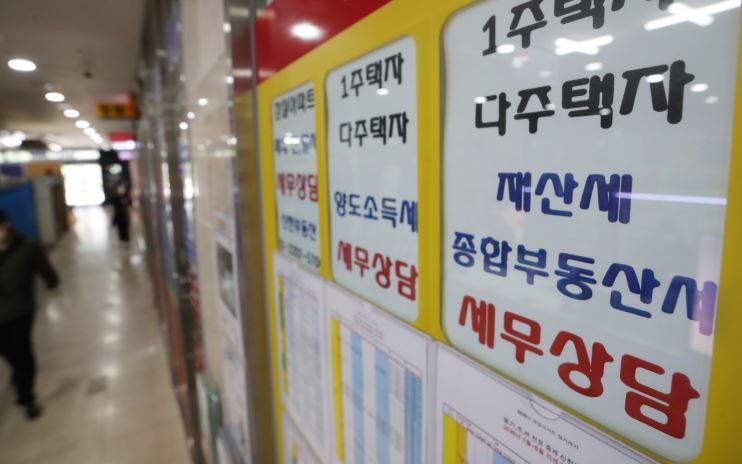SEJONG -- South Koreans shouldered a similar burden to US and Japanese nationals in property taxes, including those on real estate, in the mid-2010s, data from the Organization for Economic Cooperation and Development showed.
But recent figures indicate that Korea has far outstripped the US and Japan in the growth of property taxes, under which Koreans have been saddled with a much higher burden on capital gains from trading of apartments or land.
According to the OECD, Korea saw the ratio of taxes levied on property relative to gross domestic product stay at 2.579 percent in 2014. This was lower than the US’ 2.969 percent of GDP in property taxation and similar to Japan’s 2.567 percent.
But the figure in Korea sharply advanced by 0.542 percentage point to 3.121 percent of GDP in 2019, which is the latest year for which data is available from the OECD.
In contrast, the US and Japan posted negative growth over the corresponding five-year period, by minus 0.011 percentage point and minus 0.022 percentage point, respectively, to 2.958 percent and 2.567 percent.
The OECD specifies that the comparison includes taxes on immovable property or net wealth, taxes on changes of ownership of property through inheritance or gifts, and taxes on financial and capital transactions. It also said the changes were measured both in percentage of GDP and percentage of total taxation.
In the ratio of property taxes-to-GDP, Korea also overtook Italy and Israel, both which reduced property taxes from 3.107 percent and 2.88 percent of GDP in 2014, respectively, to 3.088 percent and 2.449 percent in 2019.
Korea is also estimated to have overtaken Australia, which ranked above Korea with 2.788 percent in 2014. Though the country has yet to publicize its 2019 figure, its 2018 figure stayed at 2.729 percent.
Over the 2014-2019 period, Korea ranked No. 2 in the growth of property taxes of 35 OECD members. The OECD has yet compile the 2019 data for Australia and Mexico of the total 37 members.
Further, 19 of the 35 members, including the US and Japan, posted negative growth: Among these are France (minus 0.006 percentage point), Belgium (minis 0.081), Spain (minus 0.086), Sweden (minus 0.11), Turkey (minus 0.226), Iceland (minus 0.257), Colombia (minus 0.308), Hungary (minus 0.323) and Ireland (minus 0.913).
Only Luxembourg, which posted 0.888 percentage point, saw its property taxes grow faster than Korea’s relative to its GDP.
Amid the fast pace, Korea’s ranking in property taxation-to-GDP is estimated to have climbed to No. 7 in 2019, up four notches from No. 11 five years earlier.
While the 2019 OECD average has yet to be made public, the average figures for 2014 and 2018 were the same at 1.856 percent of GDP.
In a similar vein, other data from the Paris-based organization showed that Korea’s tax revenue grew fastest among the OECD members.
According to the France-based organization, the Korean government’s tax revenue was equivalent to 27.38 percent of the nation’s GDP in 2019. This represents a 2.02 percentage point growth from 2017, when the Moon Jae-in administration took office and tax revenue was 25.36 percent of GDP.
The pace of growth was the fastest among the 35 OECD members for which 2019 figures were available. Two members -- Australia and Japan -- of the total 37 were excluded from the analysis.
Korea far exceeded the OECD average of 0.1 percentage point growth over the corresponding two-year period -- from 33.74 percent of GDP in tax revenue in 2017 to 33.84 percent in 2019.
Korea was the only country whose tax revenue increased by more than 2 percentage points. As the next on the list, there were only four members within the 1 percentage point range.
By Kim Yon-se (
kys@heraldcorp.com)








